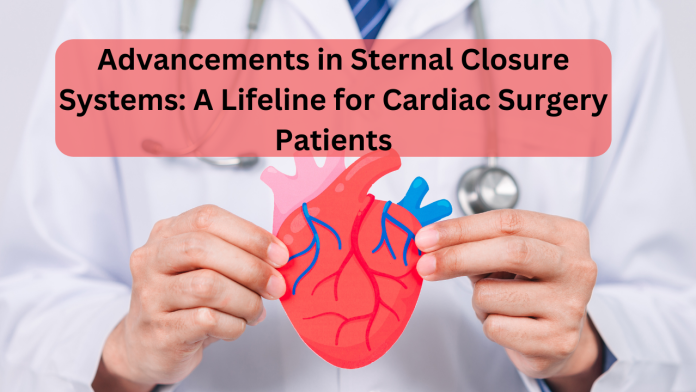Cardiac surgery has come a long way over the years, and one significant aspect of these advancements is sternal closure systems. The sternum, or breastbone, plays a crucial role in protecting the heart and maintaining chest stability after cardiac surgery. Sternal closure systems have evolved to provide better outcomes, improved patient safety, and reduced complications. In this article, we’ll delve into the significance of sternal closure systems, their evolution, and their role in enhancing the lives of cardiac surgery patients.
The Importance of Sternal Closure
Sternal closure is a critical aspect of any cardiac surgical procedure. During heart surgery, the sternum is typically divided to access the heart and perform the necessary interventions. After the surgery is completed, the sternum must be securely closed to ensure chest stability and protect the heart. The proper closure of the sternum is vital for the patient’s recovery and long-term well-being.
Evolution of Sternal Closure Systems
Over the years, sternal closure techniques and materials have evolved to meet the demands of modern cardiac surgery. The evolution of sternal closure systems has focused on several key aspects:
Suture-Based Closure: Traditional sternal closure involved using stainless steel wires to approximate the divided sternum. While effective, this method presented some limitations, such as the potential for wire breakage and postoperative pain for patients.
Rigid Plate Systems: The development of rigid plate systems brought innovation to sternal closure. These systems, often made of biocompatible materials like titanium, provide stable and secure sternal fixation. They distribute the force evenly and are less likely to cause discomfort or complications for the patient.
Less Invasive Techniques: Minimally invasive sternal closure systems have emerged, allowing for smaller incisions and reduced postoperative pain. These systems may incorporate smaller, lightweight plates or other innovative technologies.
Improved Biocompatibility: Advanced materials and coatings have been developed to improve the biocompatibility of sternal closure devices, reducing the risk of allergic reactions and infections.
Enhanced Imaging and Navigation: Cutting-edge sternal closure systems are often integrated with advanced imaging and navigation technologies. These innovations assist surgeons in achieving optimal closure while minimizing trauma to surrounding tissues.
Benefits of Modern Sternal Closure Systems
The advancements in sternal closure systems have ushered in a range of benefits for both surgeons and patients:
Improved Patient Comfort: Modern sternal closure systems reduce postoperative pain and discomfort, contributing to a smoother recovery process.
Reduced Complications: The risk of complications, such as sternal dehiscence (sternum separation) and infection, is significantly decreased with newer systems.
Enhanced Chest Wall Stability: These systems provide robust sternal fixation, ensuring the stability of the chest wall and protecting the heart.
Faster Recovery: Patients experience shorter hospital stays and quicker recoveries due to the reduced trauma associated with modern sternal closure techniques.
Better Long-Term Outcomes: Enhanced closure systems contribute to improved long-term outcomes for cardiac surgery patients, including a lower risk of cardiac events and infections.
Conclusion
Sternal closure systems have come a long way, improving the lives of cardiac surgery patients and making these procedures safer and more effective. The evolution of sternal closure techniques, materials, and technologies has paved the way for better patient outcomes, reduced complications, and shorter recovery times.
Surgeons and researchers continue to push the boundaries of innovation in this field, ensuring that cardiac surgery remains a life-saving and patient-centric discipline. As technology advances and medical knowledge grows, we can look forward to even more significant breakthroughs in sternal closure systems, further enhancing the field of cardiac surgery.
A market research company plays a pivotal role in today’s business landscape, providing invaluable insights and data-driven strategies to organizations seeking to understand, target, and thrive in their respective markets. These firms provide perfect Sternal Closure Systems Market analysis reports. Leveraging a diverse range of methodologies, from surveys and focus groups to data analytics and competitive analysis, these companies help businesses make informed decisions, identify opportunities, and mitigate risks.


